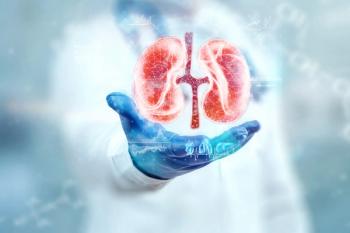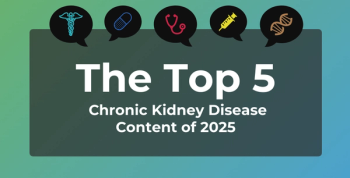
An Overview of the FIDELITY Pooled Analysis Design
An overview of the FIDELITY analysis, which pooled data from the FIGARO-DKD and FIDELIO-DKD trials in patients with type 2 diabetes and CKD.
Episodes in this series

Transcript:
Rajiv Agarwal, MD, MS: FIDELITY is not a trial, it’s an analysis. It’s a pooled individual level analysis that was prespecified. We prespecified that we would take all the data from FIDELIO-DKD and FIGARO-DKD, and we would pool them to get to the outcomes that we are interested in: the kidney outcomes and the cardiovascular outcomes. Together, we have 13,171 patients from 48 countries in more than 1000 sites who have participated in the 2 trials, as a population randomized to finerenone or a placebo. The follow-up is 3 years, median duration. So we have a lot of years of follow-up in this trial, and we are taking everybody who has an optimized ACE [angiotensin-converting enzyme inhibitor] or ARB [angiotensin receptor blocker]. They have all type 2 diabetes and CKD [chronic kidney disease].
They all have serum potassium of 4.8 mmol/L or less at baseline and run-in. But remember that after the run-in period, we have a 2-week gap between that and randomization. Many patients during that time can have an increase in potassium, and that didn’t matter: they could still get randomized to one of the two treatments. Many times, we had potassium levels of more than 5 mmol/L in the trial. They were still included in the randomization scheme. We excluded patients with symptomatic HFrEF [heart failure with reduced ejection fraction]. We prespecified the cardiovascular composite in the FIDELITY analysis, which was the same as before in the FIGARO trial. There’s a 4-point MACE [major adverse cardiac event] end point, which is CV [cardiovascular] death, nonfatal MI [myocardial infarction], nonfatal stroke, and hospitalization for heart failure.
We also have the kidney composite, which was a 57% decline in eGFR [estimated glomerular filtration rate]; kidney failure, an eGFR of less than 15 and going on dialysis; or death from kidney failure. Those were the 2 outcomes that we fixed, and now we can really analyze people who have stage 1 to stage 4 kidney disease and albuminuria ranging from 30 to 5000 mg/g: nearly all the patients who the nephrologists typically sees. The patients who are not included are the people who have an eGFR of less than 25 and who have no albuminuria in this trial. The strength of this analysis allows you to pool and look at the effects on both the cardiovascular and kidney failure outcomes in this very large population.
Transcript edited for clarity.
Newsletter
Stay ahead of policy, cost, and value—subscribe to AJMC for expert insights at the intersection of clinical care and health economics.








































